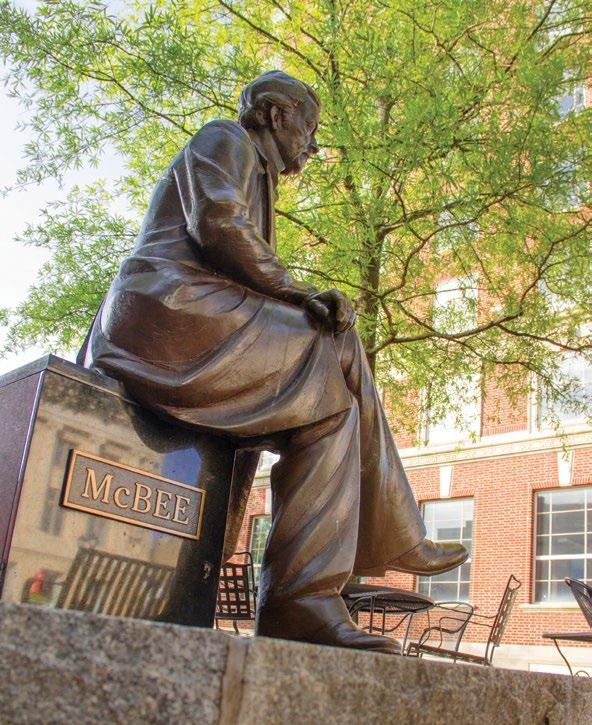
3 minute read
What’s in a Name?
Whether they’re inspired by our long and storied history, the people who helped shape our little corner of the world, or nicknames we’ve picked up along the way, Greenville’s famous—and infamous—names are worth a deeper dive.

What is a ‘Swamp Rabbit’? Do they live in swamps or know how to swim? And what does that have to do with trains?
Both our rails-to-trails masterpiece and our hockey team get their name from the long-eared hare indigenous to the wetlands along the Reedy River. Yes, they can swim (very well, actually) and they’re the largest cottontail rabbits on the planet. That would be enough, but there’s more! The Greenville & Northern Railway, which operated between Greenville and Travelers Rest more than a century ago, came to be called the Swamp Rabbit Railway because of the way it “hopped” through the countryside. These days, the 23-mile-long Prisma Health Swamp Rabbit Trail runs more than twice the length of the original railway, much of it fronting the Reedy River.
Has Greenville always been called Greenville? And is it just because it’s green?
In the 1790s, Lemuel Alston, who went on to become a U.S. congressman, platted a new community in South Carolina that he called “Pleasantburg.” His 60 homesites didn’t sell that well, and neither did the name. In 1831, local residents decided to honor Gen. Nathaniel Greene, a hero of George Washington’s Southern campaigns in the Revolutionary War, by renaming the community, “Greenville.” Considering the incredible natural beauty that surrounds us here, the name made all kinds of sense. And fear not: the name Pleasantburg survives to this day, serving as the name of one of the city’s major thoroughfares and business corridors.
Why do I see the name McBee everywhere? Is he important or something?
Locals pronounce Vardry McBee’s name MAC-bee. Considered by many to be the father of Greenville, he purchased Lemuel Alston’s prime Reedy River real estate in 1815 (when it was still known as Pleasantburg—which should all make sense to you if you’ve been paying attention!), and the rest is history. McBee was a hard-working entrepreneur with a diverse range of businesses: from saddlery to farming to building an industrial empire that included a sawmill, quarry, ironworks, grist mills, and more. A life-sized bronze statue of his likeness sits at South Main and Court Streets, and numerous places around town proudly bear his name.
You see them every December, just about the time Santa and his elves are kicking things into high gear. The scarlet-red blossom that’s become a winter holiday staple is actually named after Joel Poinsett, the man immortalized in a statue that sits in front of the—where else?—Westin Poinsett hotel. A physician, botanist, and diplomat, Poinsett was serving as the first U.S. Minister to Mexico when he encountered what the locals call the flor de Nochebuena, or Christmas Eve flower. The plant became known as the poinsettia 21 years before his death in 1836. Interestingly, Charleston-born Poinsett, who went on to co-found what would in time become the Smithsonian Institution, seems to have had only one direct connection to Greenville: he was master of a local Mason’s lodge.
Why is it called Paris Mountain? Are we in France? Can I get a croissant?
Richard Pearis, the first documented white settler here around 1770, was an Irish immigrant and trader who was simultaneously married to two women: one Irish, and the other, a Cherokee chief’s daughter. Over time he acquired 100,000 acres of hunting lands and proceeded to establish a trading post, grist mill, and sawmill along the banks of the Reedy River. Ultimately, he somehow survived the two-wife thing, but his role as a British Loyalist during the Revolutionary War got him run out of town. For years following his departure, the land around the mountain, and the mountain itself, was simply referred to as “Pearis’ mountain.” A couple of centuries later, the spelling has changed but the lovely mountain and its scenic surroundings remain.










